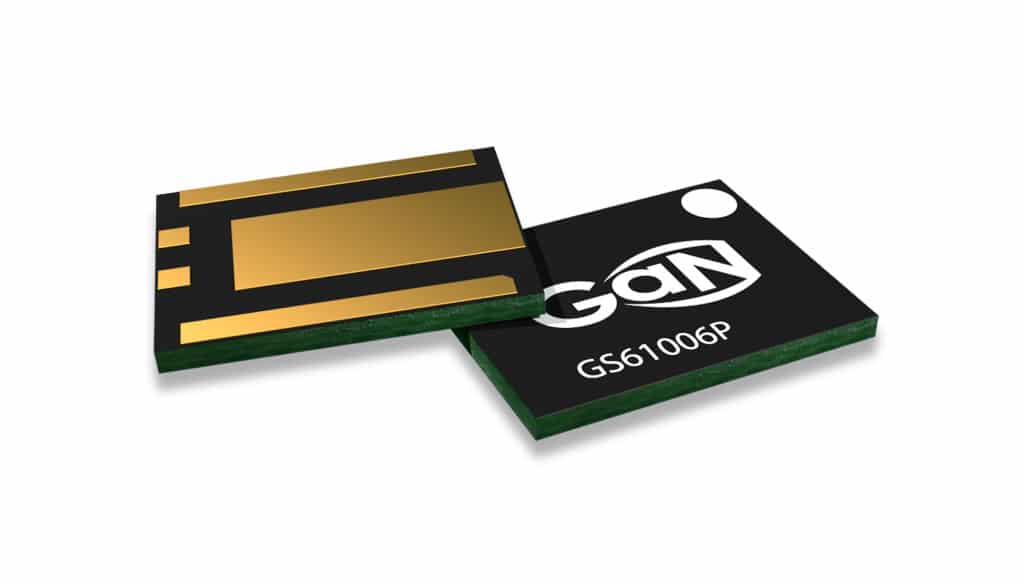source: EPCI, Tomas Zednicek
GaN transistors have been for long time considered as the side product for special applications. Nevertheless, the recent advancements and introduction of GaN transistors with various voltages, current ratings and package designs present a real “revolution” in the field of active components these days. New generation of DC-DC switching converters operating efficiently at higher switching frequencies can bring significant downsizing, low profiles and higher power outputs of today’s power supplies. The GaN “revolution” may have an significant impact to the need of passive components in near future.
The switching frequencies of DC-DC converters with GaN transistors can increase up to 40MHz from the current efficiency sweetspot 500kHz to 2MHz typical for sillicon transistor. GaN transistors could enable 65 watt tablet adapters with 680W-per-cubic-inch densities, and 96% efficiency, according to the latest news from the active components industry.
Infineon recently announced release of GaN based very small module in 5mm x 6mm x 0.9mm package that can deliver 70-A load at up to 5.5V output and claimed efficiency better than 95 %. This demonstrates capability of the technology to deliver high power, high switching frequency together with high efficiency at low profile designs. The other vendors annouced GaN base transistor with 60A continuous load capability within just a 0.5mm maximum thickness and efficiency close to 99%. The operating range of GaN transistors is however not concentrating only on low voltage applications, the maximum working voltage of power train recently increased from 650V to as high as 1200V and thus it brings new solutions for wide range of industrial and automotive applications including HEV/EV vehicles.
The recent development and commercialization of GaN transistors may present an important change for the need of passive component used in today’s DC/DC converters. The significant increase of the switching frequencies and the current ratings will present a major challenge for the output capacitors and resistors.
The trend for capacitors’ higher current ratings, lower equivalent series resistance ESR, lower self inductance ESL in smaller, lower profile package has been already seen on today’s silicon based transistor technology for decades and it present “no surprise” for capacitor manufacturers that have such development programs already in place. Nevertheless introduction of the latest GaN transistors present such big jump in the performance that the traditional technology continuous improvements may not be sufficient. The usual application way to increase output capacitance and power rating is to use multiple capacitors in a capacitor bank. Nevertheless parallel configuration is not influenving the resonance frequency – thus low ESL capacitors with stable capacitance value at high frequencies have to be used only at the GaN working frequencies – where capacitance value and power ratings may be limited. Thus the capacitor bank would have to use many low ESL capacitors in parallel to achieve the required parameters. Such multiple capacitor field naturally require more space and cost and it may degrade some of the GaN advantages. The GaN transistors thus present a challenge for the new capacitor technology with ever highest capacitance, highest power ratings, lowest ESR, lowest ESL and low profile designs.
Similar can be considered for the resistors selection guide – the resistor technologies with higher parasitic capacitance or inductance may not be suitable to operate at such frequencies close 40 MHz as presented by the new generation of GaN transistors.
On the other hand HW designers may be faced with other new issues related to the high switching frequencies and high power ratings. The EMC considerations and radiation shielding may change its requirements as well – thus it can present a new opportunities for EMC filters, noise suppressors etc.
In summary, the current revolution in the active component industry brought by introduction of the new GaN transistors generation may significantly influence the passive component industry in near future. Not only the change in the passive component type volume mix, but it has to be followed by a new innovative component types that will enable end-users to effectively use all the new capabilities of the GaN transistors.
